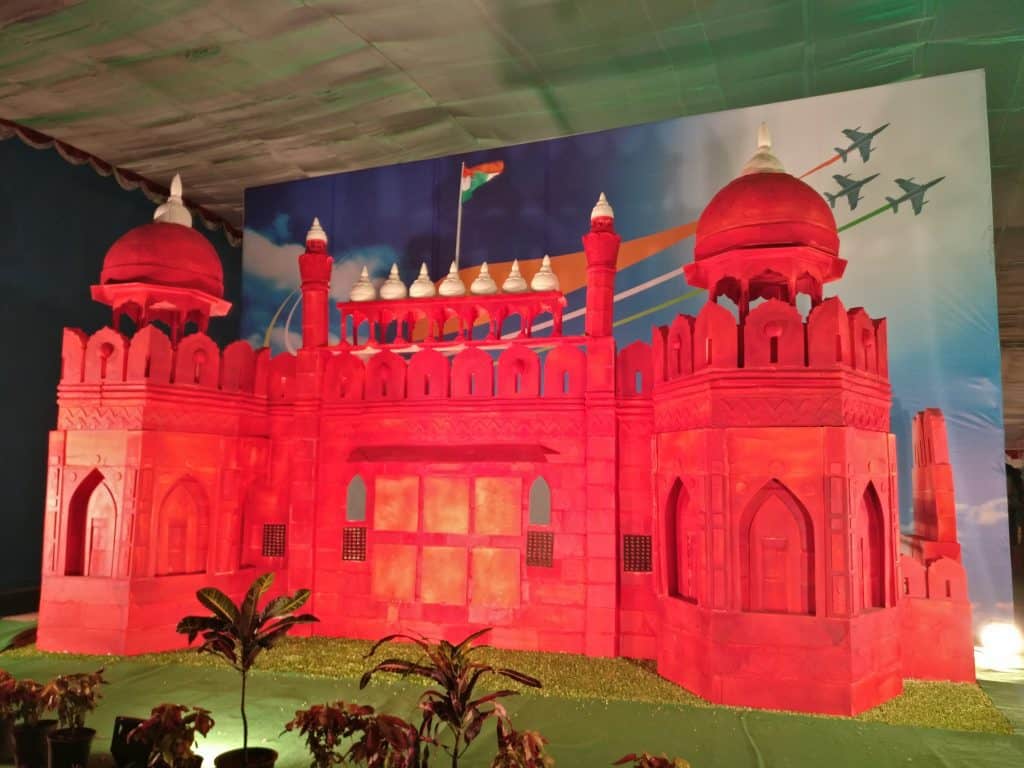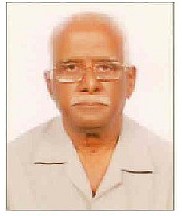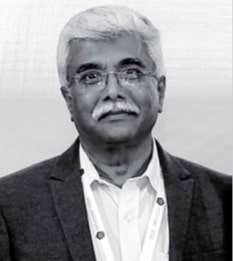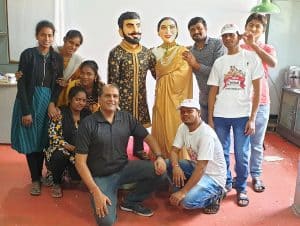There are cubes and cylinders here. But this is no maths class. There are bugs and a big scorpion too, yet this is no forest. Buddha and Christ almost facing each other, not in any place of worship though. This is Bengaluru’s most famous cake show, that happens at St Joseph’s Grounds every year, in this season. If you are a Bengalurean or have been here for a couple of Christmas seasons now, chances are that you would have visited this show.
It was sheer chance that saw me near the gates of St. Joseph’s School on a Thursday evening this December. Seeing an arrow pointing to the Cake Show venue, I walked up to the counter and bought myself a ticket costing Rs. 70/-.

A replica of Red Fort made from sugar blocks. Pic: Deepa Vaishnavi
As I stepped into the temporary tent-like construction, I was welcomed by the front façade of the iconic Red Fort with the Indian tricolour gently fluttering in the breeze. I was to learn later that the entire model was made completely of sugar. Right next to it was an elaborate multi-tiered wedding cake which has been designed by C Ramachandran of the N Dairy Farm. As I walked further in, I got to see 20 other cakes.
Penguins on Snow, Genie, Chinese Pagoda, Butterfly Fairy Doll, Wishing Well, Sewing Dhaaga, Buddha – Water and Succulent Garden, Joker for Joy / Jack in the Box, Christmas Snowman, Moana Wave, Natural Disaster, Christ the Redeemer and more, all fitting this year’s theme, ‘Water and Earth’.
Center-pieces that tell a tale
The history of the cake show is interesting. The first ever cake show was held at the Nilgiris Department Store on Brigade Road in 1970. It consisted of a single 14-inch high sugar model of the Eiffel Tower made by Ramachandran C. A confectioner himself, Ramachandran got inspired by sugar models on display in Europe (Belgium and West Germany) and tried something similar in Bengaluru.

Ramachandran C
The number of visitors to the store to see the model resulted in the cake show becoming an annual feature at the shop with the number of cakes and sizes increasing gradually. Later it got shifted to St Joseph’s grounds. This year it is the 44th cake show in progress.
Each show has one big centre-piece and 20 odd relatively smaller cakes. The former is made completely of sugar and is to scale. The biggest model ever made was in the year 1995 — the 25th year of the cake show. It was of the Vidhana Soudha – 70 feet long, 35 feet wide and 22 feet high. Made completely of sugar, it was built without any support.
The center piece has often been also an ode to some event. For example, Twin Towers (USA) was the main exhibit in the year of 9/11. The movie Titanic was released during the end of 1997 and the centre piece the following year was the ship.
Centre pieces in the past have included a Vintage Car, a Merry-go-Round, a Giant wheel, a 10-foot high Eiffel Tower, the Public Utility Building (1986), the London Bridge (1991), Taj Mahal, Mysore Palace, Bangalore Palace, Charminar, a Church, a five-sided (pentagon shaped) building depicting unity among different religions, etc.
Cake show ain’t a cakewalk..
M/s Gopalakrishnan Chenniappan and Ramachandran C from the family established the erstwhile Nilgiri’s Supermarket Chain in 1905. According to Gopalakrishnan C, the annual cake show “…is an event in Bangalore for the public to go to. Bangalore did not have much of entertainment in the earlier days and this was a big event (during Christmas season) for people to go and spend some time.”

Gopalakrishnan C
Ramachandran C is the architect of the cake show and was the one who visualised the show in the late 1960s. He liked working with sugar from when he was in high school. “We had our own bakery. Those days, we had some bakers and confectioners who had been working during the British time. They continued to work with us. I learnt sugar art from them,” he said, reminiscing about the early days.
What does it take to preparing for the show? He said: ‘We normally used to start three months ahead of the exhibition. One center-piece and the other exhibits, 15 – 20 items, would be decided upon based on different interests. Weather is often a problem. Sugar is hygroscopic and absorbs moisture. We use heaters to keep the exhibits warm so that no moisture is absorbed by them. Otherwise, we have not had any major problems. Transportation could be a problem – one or two pieces may break. We always make something extra keeping this in mind.”
Cakes get bigger every year
The family has continued the tradition of the cake show through their current venture N Dairy Farm Pvt. Ltd. post the sale of Nilgiris to a UK-based firm in 2006. An event management company organises the show nowadays. The cakes were made by the bakers at Nilgiris till such time it was sold and for a few years thereafter.
Since 2011, most of the cakes are made by the students, teachers and trainers of the Institute of Baking and Cake Art (IBCA), Bengaluru, with some guidance from Ramachandran. At least one cake made by him is displayed each year.
While it was passion that drove Ramachandran to start the cake show, the reason for IBCA partnering with him was the commitment to its students’ learning. Manish Gaur of IBCA shared how the Institute has been an integral part of the show since 2011.
Manish Gaur says: ‘We have been teaching sugar art and sugar craft quite extensively. We have always challenged ourselves to excel in the learning and passing the same to our students. We saw this as an extension for the student learning – to express their art in a form which can be much larger than the usual cakes which is dealt with in the class. When they go larger, the challenges are different. The students find an amazing lot of learning as the challenges are larger. That was the reason we picked it up.”

Manish Gaur and some of the 23-member IBCA team that worked on the cake show this year with the caricature of Deepika and Ranveer
Elaborating on this, he added, “We started with the smaller cakes. Now we are starting to go with the larger ones. We are challenging ourselves every year with new development. This year we have flexible edible fabric – it is 100% edible and made out of sugar. It is flexible and is as thin as cloth. We are able to get textures. We are able to do block printing as close to garments printing as possible. Deepika and Ranveer’s caricature is one example. We have tried paper punches. We try to experiment with materials of various kinds and see how close we can get to realistic presentation. In the cake on Natural Disaster, the cyclone effect we gave on top is an Indian sweet (chiroti).”
Every cake has a learning to share..
Talking about the process involved in conceptualising the show, the theme, the number of cakes, and other matters, Manish Gaur said: “Right now I am doing a little bit of research for 2019. The ideating starts right after the cake show. We start planning and working 4 – 5 months ahead. My team and I sketch the ideas, break them into different designs, design the components and decide on the scale of the models, plan how the components are to be made and arranged. And when we start making the components, we keep them in a dry place in order to prevent sugar from becoming sticky or melt.” The place needs to be full of lights, which gives the warmth the sugar requires to stay firm and dry.
There is an element of learning in every cake. The kind of materials they use, the way the materials are made, and more. Manish gives an example. “Our edible lace could be on a Chinese Pagoda, it is there on Mr. Ramachandran’s creation of the cake, it is there in the King’s Table, and maybe on Moana’s dress… There are these textures and techniques which we have tried putting across in each cake.”
The materials used to make the cakes this year include sugar paste, royal icing, rice crispy cake, fondant, gum paste, edible fabric, wafer paper, an Indian sweet, flexi sugar fabric, flexi-edible fabric, chocolate, flexi pour, Jelly water and Pastillage sugar clay dough.
Structural material has been used where needed in order to support the cakes. According to the information provided by IBCA, ‘Sugar Cake creations are made using sugar dough forms that include Fondant, Gum paste and Pastillage. Sugar dough is used for creating an art piece that’s both sweet and edible. They can be modified to cater to different forms like sheeting, rolling, molding, shaping, embossing, cutting, drying, colouring and more.’
Cakes that cannot be eaten!
Around 2.5 – 3 lakh people come to view the cake show annually. They include locals, people from neighbouring cities and towns, and foreigners too. Needless to say, the number of people at the venue spikes during weekends and holidays.
All cakes on display are destroyed after the exhibition, largely through decomposition – these cakes cannot be consumed because of the dust that would have gathered during the show.
The way out was through a space adjacent to the cake show, much larger though, and which had various things on sale. Cake sale has become a standard feature for over a decade now ever since Nilgiris (and subsequently N Dairy Farm) entered into an agreement with the National Consumer Forum in 2004.
The show is usually held during the Christmas season, from the 3rd week of December to the 1st / 2nd of January.
As I walked out of the venue, I couldn’t help but pick up a true-blue Christmas cake, and a couple of marzipan packets from the cake stall right next to the exit. These goodies brought back many]beautiful memories of my growing up years.